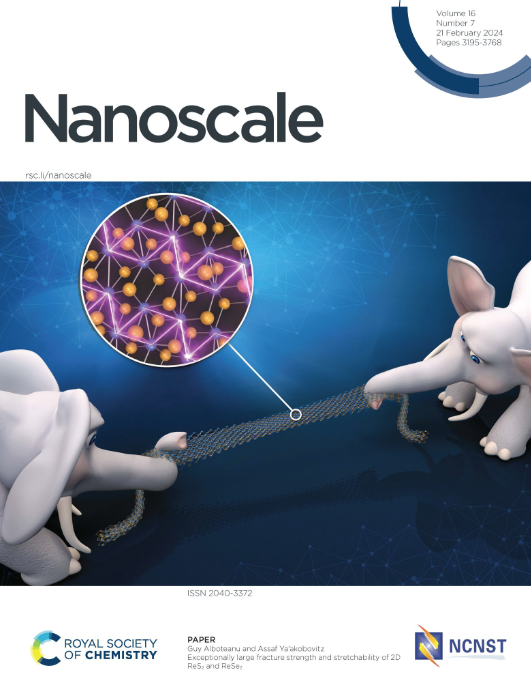Investigations of ligand hole of Ni-rich layered cathodes: a new organic coverage to battery performance enhancement
IF 5.8
3区 材料科学
Q1 CHEMISTRY, MULTIDISCIPLINARY
引用次数: 0
Abstract
Ni-rich (Ni content > 60%) layered cathodes are currently the most promising materials for lithium-ion batteries due to their high capacity and elevated voltage plateau compared to LiFePO4. However, Ni-rich cathodes face significant challenges, such as Jahn-Teller distortion, cation mixing, electrolyte deprotonation, and the presence of residual lithium compounds. These issues present barriers to the widespread use of high-energy-density lithium-ion batteries employing Ni-rich cathodes. Ni-rich cathodes, containing a high concentration of Ni3+, encounter another problem known as the oxygen ligand hole effect, which affects the hybridization of O 2p and Ni 3d orbitals. Anionic redox occurs at the oxygen site with Ni3+, leading to a decrease in electron density, making the formation of Ni4+ at high states of charge (SOC) difficult. Consequently, battery capacity is primarily derived from anionic redox reactions. This study presents an organic coverage (OC) designed to enhance the stability of the oxygen ligand hole, enabling greater capacity through enhanced Li+ interaction. Additionally, Ni-rich cathodes often suffer from gas evolution when charged to a high SOC, primarily due to the instability of the Ni-O bond. The OC is hypothesized to support the chemical reduction of Ni 2p53dn+2L back to Ni 2p63dn+1L, the L represents O 1s12px+1 → O 1s22px on the surface of NMC811, thereby strengthening the oxygen ligand hole and stabilizing covalent Ni3+. This improvement results in the OC-modified NMC811 exhibiting outstanding cycle performance under high-rate tests and excellent stability at high temperatures.富镍层状阴极配体空穴的研究:提高电池性能的一种新的有机覆盖
富镍(Ni含量>;与LiFePO4相比,由于其高容量和高电压平台,层状阴极是目前最有前途的锂离子电池材料。然而,富镍阴极面临着重大的挑战,如Jahn-Teller扭曲、阳离子混合、电解质去质子化和残余锂化合物的存在。这些问题对采用富镍阴极的高能量密度锂离子电池的广泛应用构成了障碍。富镍阴极,含有高浓度的Ni3+,会遇到另一个问题,即氧配体空穴效应,它会影响O 2p和Ni 3d轨道的杂化。Ni3+在氧位点发生阴离子氧化还原,导致电子密度降低,使得Ni4+难以在高荷电态(SOC)形成。因此,电池容量主要来源于阴离子氧化还原反应。本研究提出了一种有机覆盖(OC),旨在增强氧配体空穴的稳定性,通过增强Li+相互作用实现更大的容量。此外,由于Ni-O键的不稳定性,当充电到高SOC时,富镍阴极通常会发生气体析出。假设OC支持Ni 2p53dn+2L化学还原回Ni 2p63dn+1L, L代表NMC811表面的O 1s12px+1→O 1s22px,从而强化氧配体空穴,稳定共价Ni3+。这一改进使得oc改性的NMC811在高速率测试中表现出出色的循环性能,并且在高温下具有出色的稳定性。
本文章由计算机程序翻译,如有差异,请以英文原文为准。
求助全文
约1分钟内获得全文
求助全文
来源期刊

Nanoscale
CHEMISTRY, MULTIDISCIPLINARY-NANOSCIENCE & NANOTECHNOLOGY
CiteScore
12.10
自引率
3.00%
发文量
1628
审稿时长
1.6 months
期刊介绍:
Nanoscale is a high-impact international journal, publishing high-quality research across nanoscience and nanotechnology. Nanoscale publishes a full mix of research articles on experimental and theoretical work, including reviews, communications, and full papers.Highly interdisciplinary, this journal appeals to scientists, researchers and professionals interested in nanoscience and nanotechnology, quantum materials and quantum technology, including the areas of physics, chemistry, biology, medicine, materials, energy/environment, information technology, detection science, healthcare and drug discovery, and electronics.
 求助内容:
求助内容: 应助结果提醒方式:
应助结果提醒方式:


